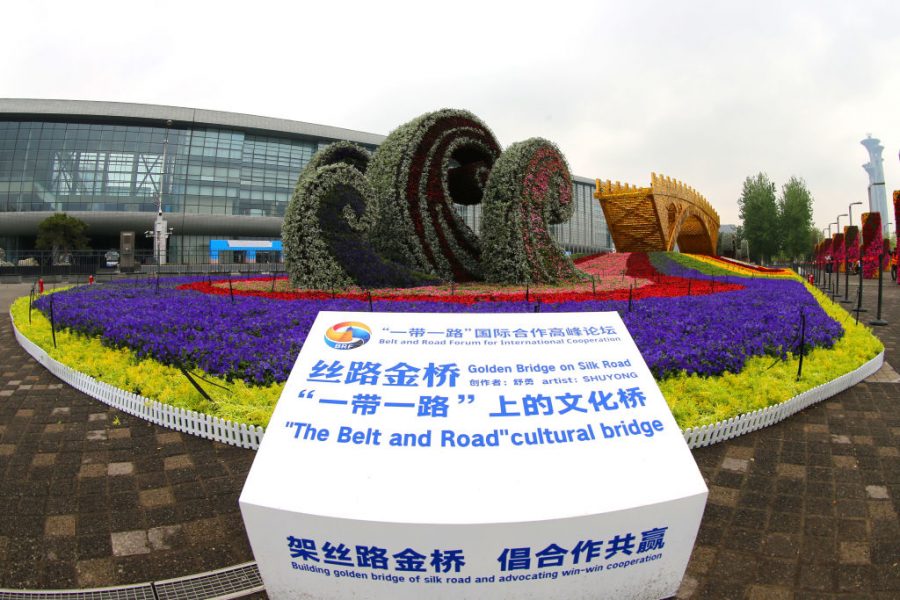Southeast Asian narratives about US–China competition (part 2): You’ve got to be in it to win it

In
part 1 of this series, I considered two of the narratives about great-power competition that have gained currency in Southeast Asia: that states are being pushed to make a choice between Washington and Beijing, and that they don’t really have a choice—destiny draws them to China. But that’s not the whole story. Two other narratives are gaining strength in the region, both of which bear a striking resemblance to the official narratives being broadcast from Beijing.
There’s an increasing effort to present China’s activities in Southeast Asia as collaborative, cooperative and well intentioned. Despite what’s happening in the South China Sea, the emphasis is on the positive strides that have been made in negotiating a mechanism for managing disputes, the
elusive code of conduct. And notwithstanding the widespread backlash against the ‘debt-trap diplomacy’ of the China’s Belt and Road Initiative after Sri Lanka’s experience with the port of Hambantota, most countries in the region remain open to Chinese investment, albeit with a heightened degree of caution.
China’s performance at the second
Belt and Road Forum in April 2019 was an attempt to rebrand the BRI. It has been painted widely as demonstrating that Beijing is able to accept criticism and is committed to modifying and reforming its financing practices and allocating resources to more sustainable and green projects.
There have been some significant shifts. The public position of Malaysian Prime Minister Mahathir Mohammad on the BRI moved from his strongly stated concerns about ‘unequal treaties’ before the forum to a ‘can’t get enough of the BRI’ position after it. The BRI is also portrayed as an exemplar of how China transforms into a public-good provider when details of its financing and debt liquidation aren’t discussed.
Tensions in the disputed areas of the South China Sea are being downplayed by claimants (with the exception of Vietnam). Last year, Malaysian and Indonesian diplomats warned that US freedom-of-navigation operations close to China’s artificial structures were exacerbating tensions. After a
near collision between US and Chinese warships, they raised concerns about the presence of large US naval vessels. However, they didn’t refer publicly to the Chinese naval vessels that have persistently maintained, and even strengthened, their presence in the region.
Aside from Vietnam during the
recent standoff at Vanguard Bank, none of the Southeast Asian claimants seem to have raised concerns about China’s increasingly bold and frequent incursions into their exclusive economic zones—including Malaysia in the case of
Luconia Shoals. The Philippines and Brunei have worked out with Beijing schemes of joint exploration for natural resources in disputed maritime areas and are negotiating ways to work with China in their own EEZs. Malaysia has established a working group to examine the same issue. Hanoi remains the sole outlier in this collective narrative about a cooperative China that is seeking win–win outcomes with its neighbours.
But ‘cooperative China’ is a strategically dangerous and misleading narrative intended to neutralise the perception that China is a threat. It may cost ASEAN its most valued and desired asset—strategic centrality.
To make things worse, the narrative that the US is withdrawing from the region has taken hold strongly. Some
68% of Southeast Asian respondents to a regional survey conducted by the ISEAS-Yusof Ishak Institute said they believed that US engagement in Southeast Asia had decreased under the Trump administration.
One of most popular adjectives to describe the Trump administration overall was ‘unpredictable’. Whether that is reality or a consequence of tweets and slogans is another story, but the view has taken hold that the US lacks commitment to the region and that its level of engagement depends on the mood of the president.
Beijing, meanwhile, continues to reassure its neighbours that China and Southeast Asia are bound by ties of history and geography. Trump’s conspicuous and repeated absences from regional summits bolster that argument.
The level of
US representation at two key meetings in Bangkok in October, downgraded to Secretary of Commerce Wilbur Ross, was arguably at its lowest in a long time. Neither the vice president nor the secretary of state turned up. Decisions like this are undermining Washington’s Indo-Pacific rhetoric, which stresses the region’s strategic priority. Only
three out of 10 ASEAN heads of state attended the ASEAN–US summit, a clear sign of US diplomatic underperformance in the region.
This narrative ignores the fact that under the Trump administration US engagement with Southeast Asia hasn’t diminished significantly. In some areas, it has actually increased,
including the new initiative for US–ASEAN smart cities and collaboration in space, cyberspace and energy and reviving the Lower Mekong Initiative.
There are strong views on President Donald Trump’s trade policies, which are generally seen as jeopardising the economic interests of all Southeast Asian nations—even though some Southeast Asian markets have benefited from American companies relocating out of China.
Defence cooperation, on the other hand, looks solid. The US completed the first joint maritime exercises with ASEAN (
AUMX) in September, has renewed its agreement on military facilities with Singapore, and has increased its activity with Vietnam. Yet diplomatic absences from the region, and potentially damaging trade policies, appear to overshadow that progress.
The tendency to talk up Beijing’s good sides while talking down
Washington’s contributions is increasing. Any counternarratives stand little chance of being heard, let alone of proving popular, especially when the nation that needs to press its case isn’t present. As the saying goes, ‘You’ve got to be in it to win it.’
The danger in the Trump’s administration’s policies towards Asia is that its own narrative and its actions are too often contradictory. All too easily the US can be portrayed as an unreliable ally and partner. More importantly, narratives are not a substitute for a real and coherent strategy.
China is slowly but surely winning the contest of perceptions. But it’s going to be a long game in Southeast Asia.
 Print This Post
Print This Post